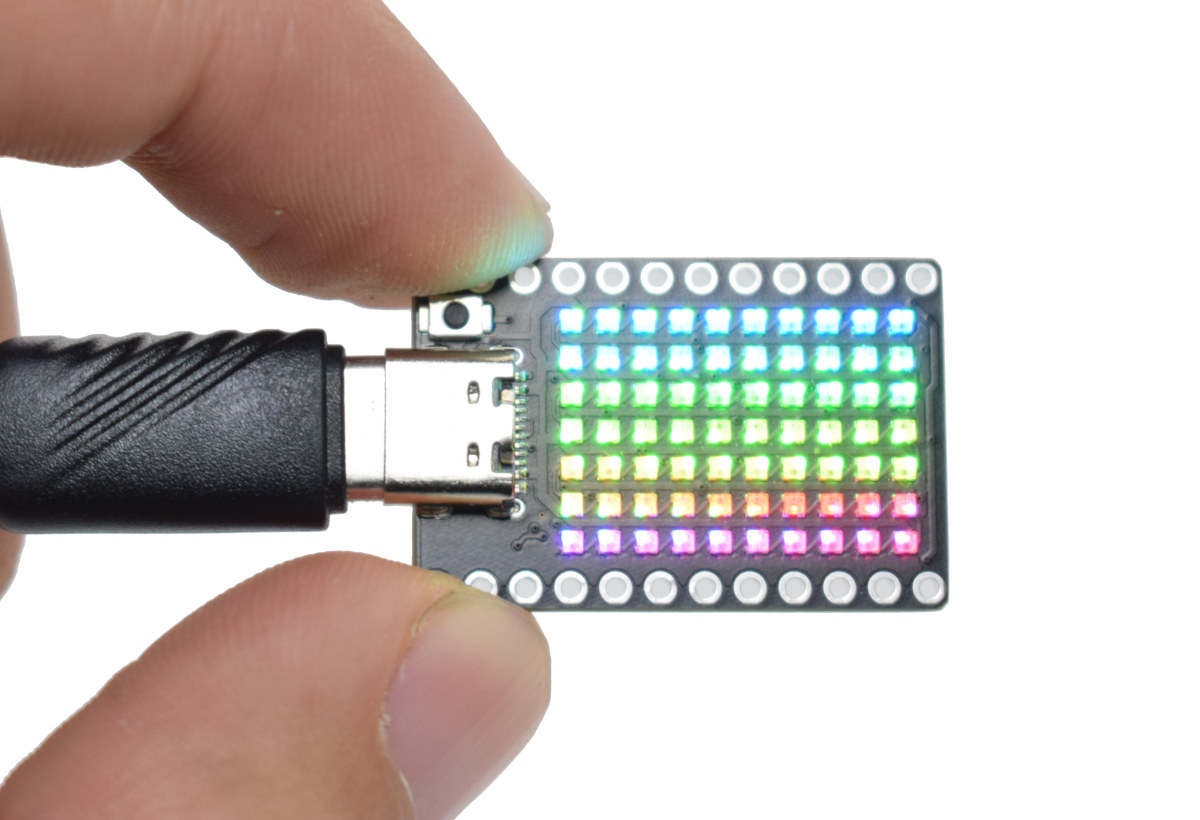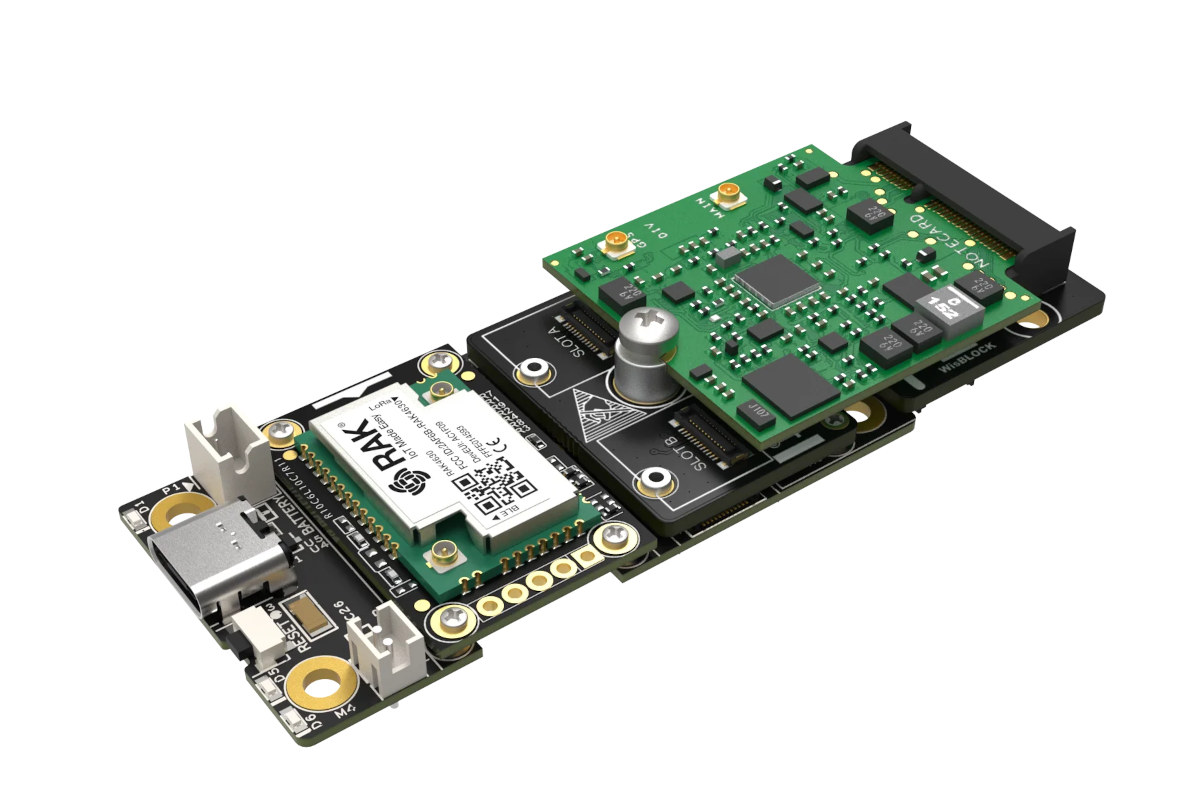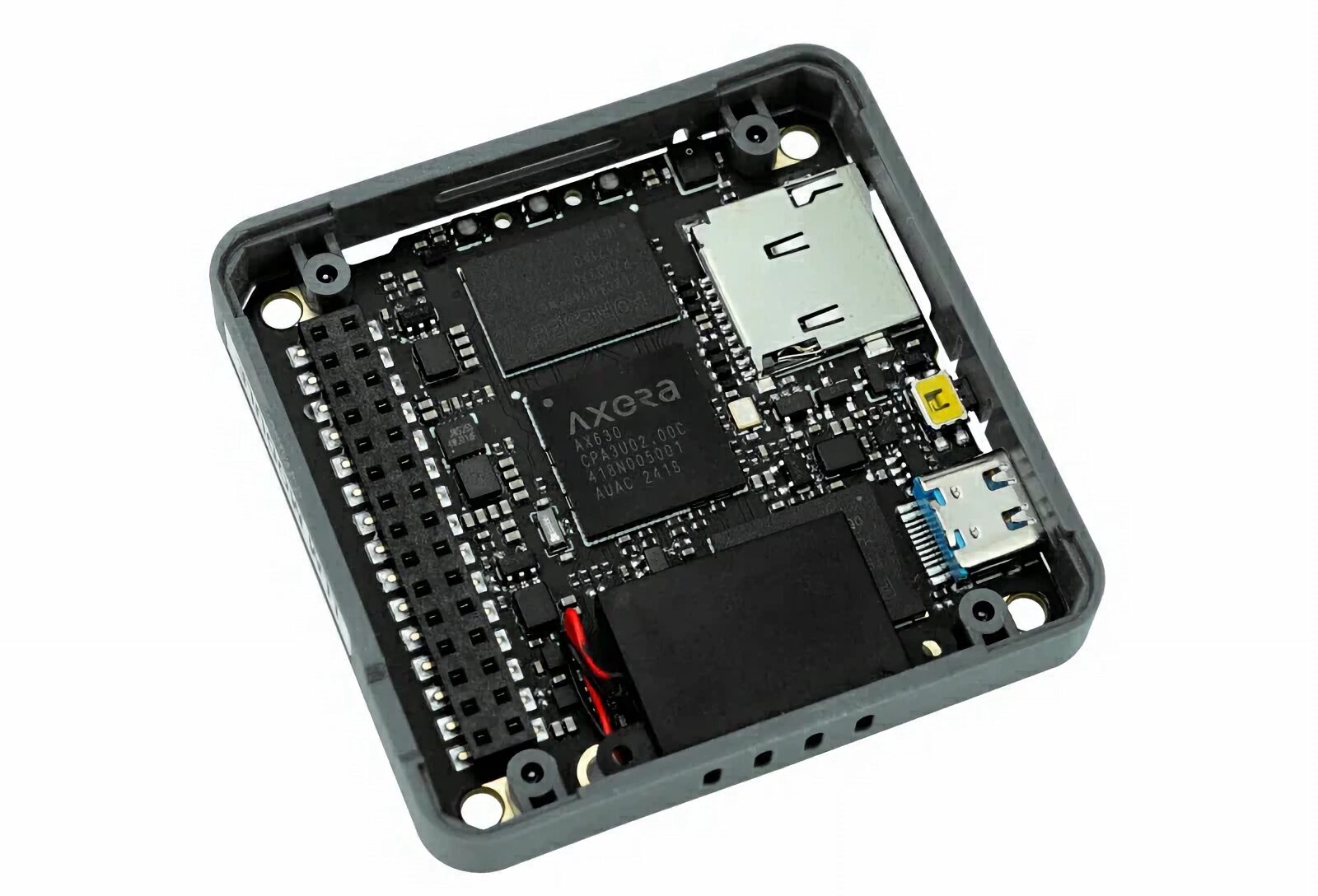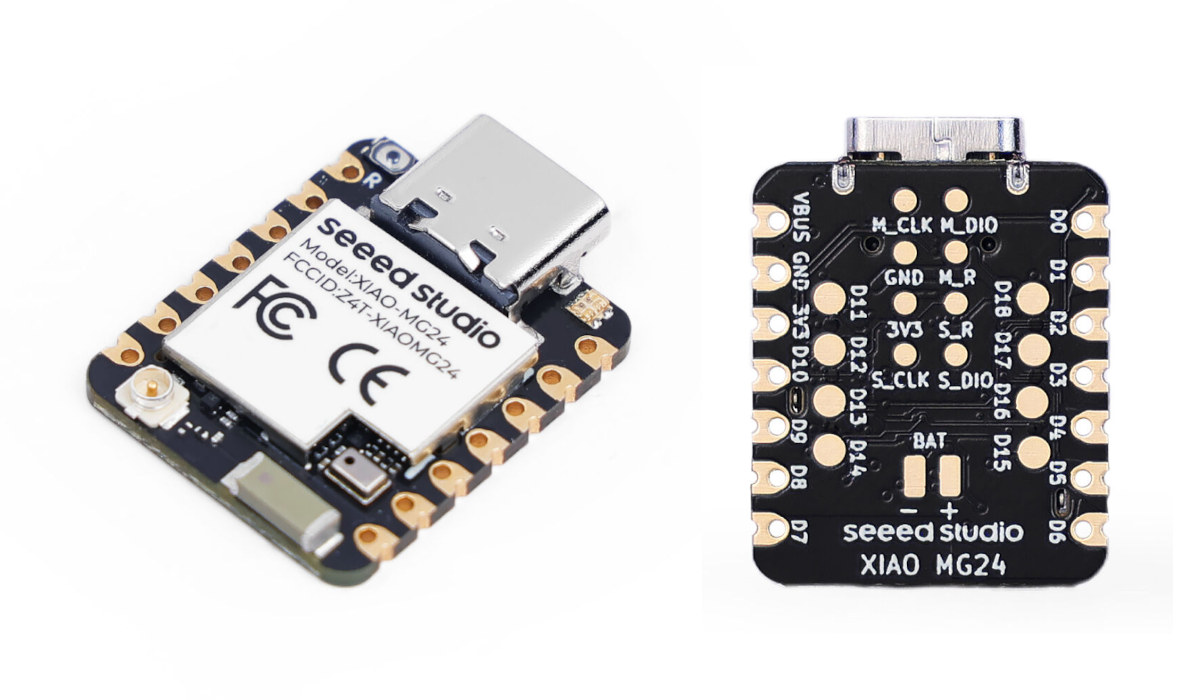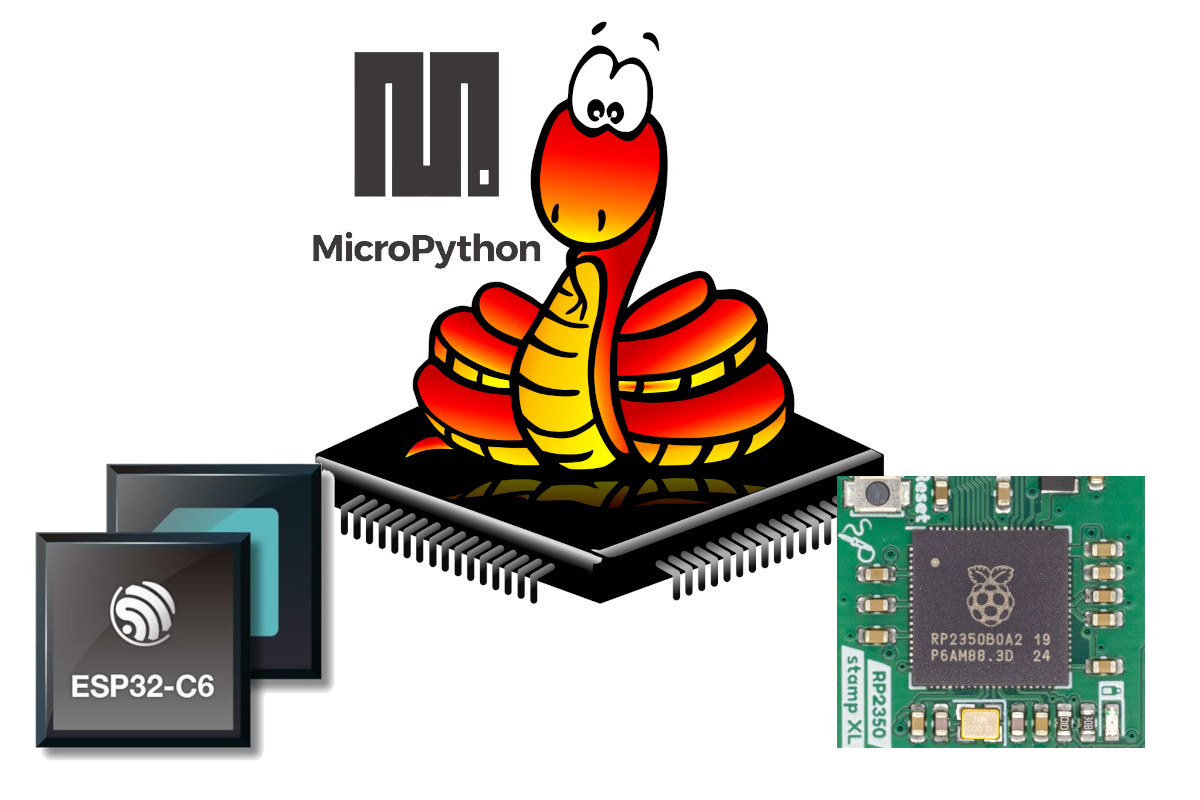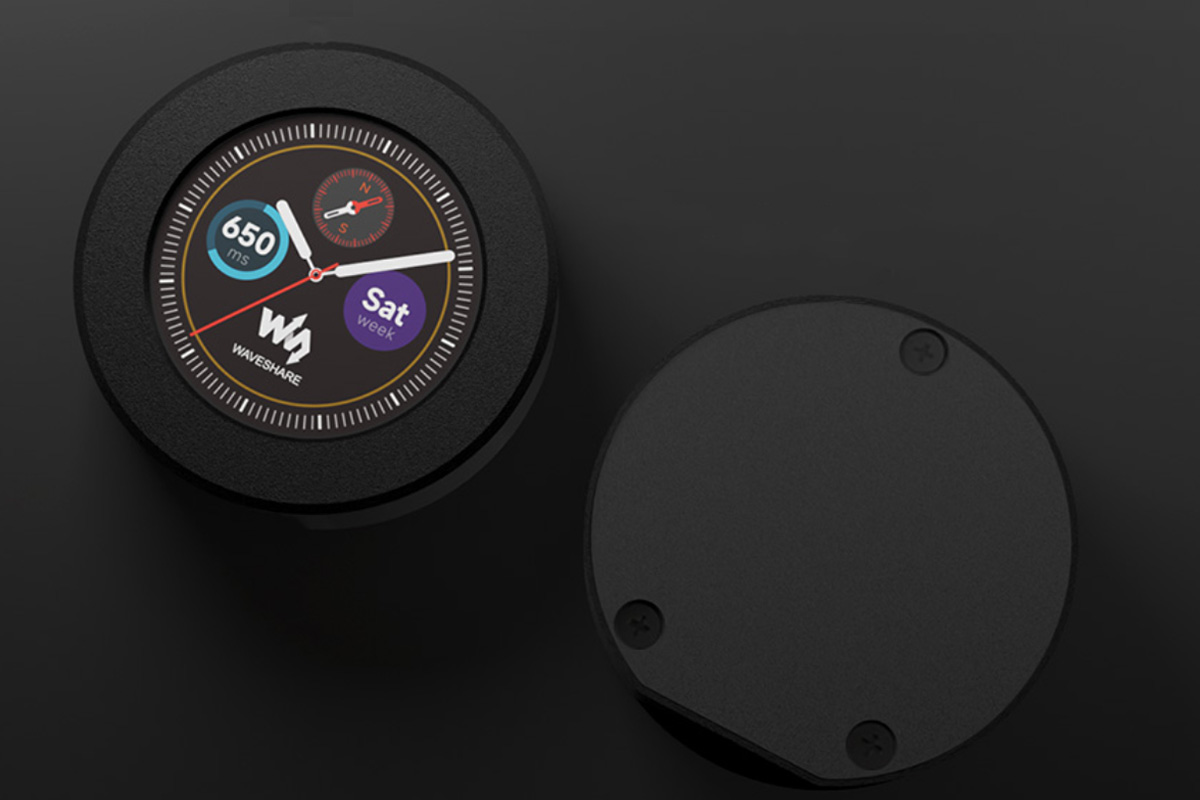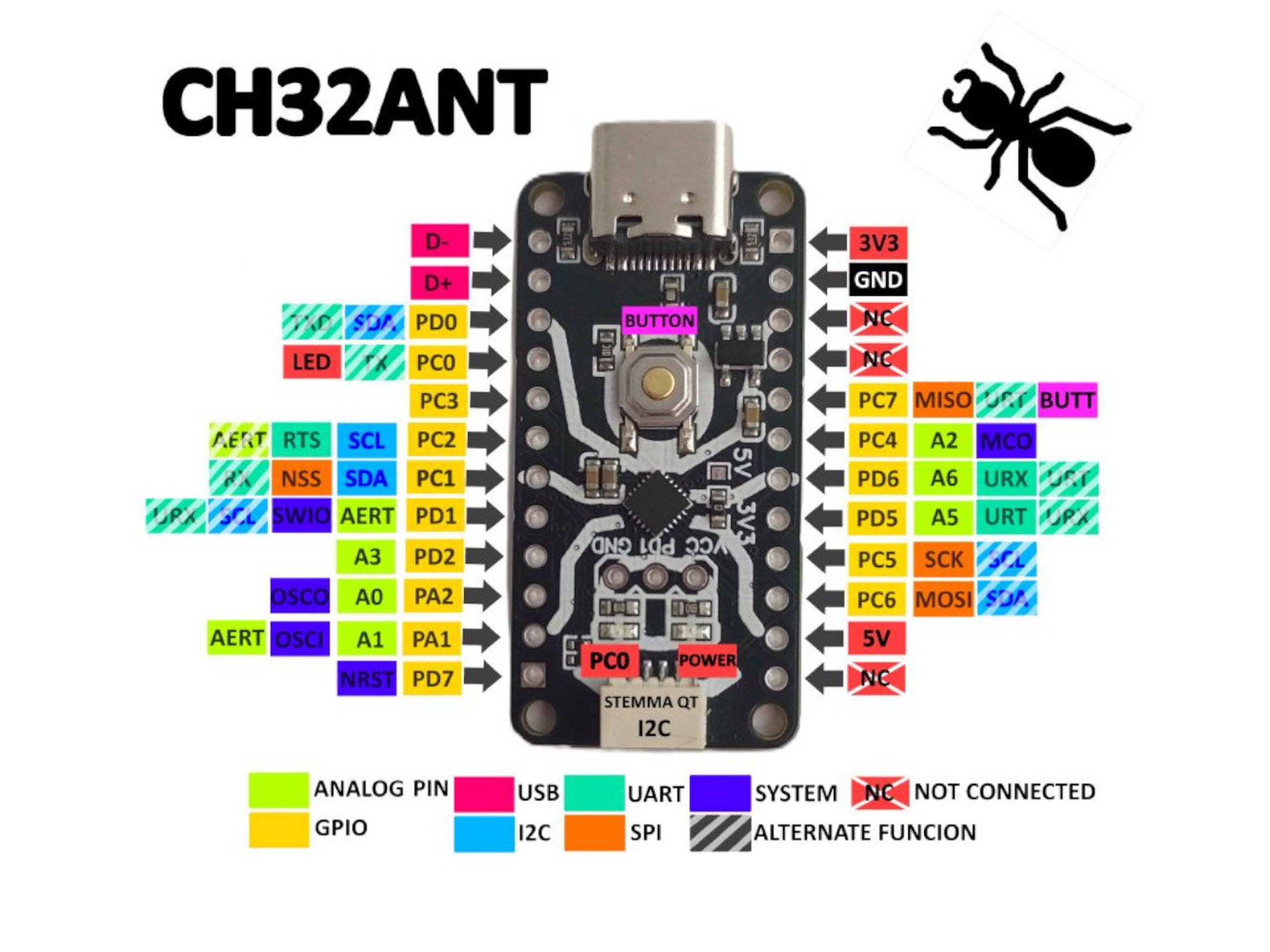Vcc Labs’ Nova is a tiny, open-source hardware Raspberry Pi RP2040 development board with a USB-C port, a 70 (7×10) addressable RGB LED matrix, and two 12-pin GPIO headers for expansion. It can be used for wearables, mini-displays, interactive art, fun games, and more. Nova specifications: MCU – Raspberry Pi RP2040 dual-core Cortex-M0+ microcontroller @ up to 133 MHz with 264KB SRAM Storage – 2MB QSPI flash “Display” – 7×10 WS2812 addressable RGB LEDs, each measuring just 1x1mm USB – USB Type-C port for power, data, and programming Expansion – 2x 12-pin header with 20x GPIO, 2x SPI, 2x I2C, 2x UART, 4x ADC, Vin, 5V, 3.3V, and GND Misc – Reset and BOOT buttons Power Supply 5V via USB-C port 7V to 18V via Vin pin Power consumption – 9 Watts with all LEDs at full brightness Dimensions – 30.48 x 20.32 mm (PCB only) Weight – 4.76 grams […]
Giveaway Week 2024 – RAKwireless Blues.ONE LoRaWAN, LTE-M, and NB-IoT devkit
For the fourth year in a row, RAKwireless is participating in CNX Software’s Giveaway Week, and this year, the company is offering the Blues.ONE IoT development kit with LoRaWAN, LTE-M, and NB-IoT connectivity and 500MB of cellular data through the Blues NoteCard. The devkit can be used to prototype or develop IoT devices for industrial automation and asset-tracking applications and relies on the WisBlock modular IoT prototyping system with the RAK13102 WisBlock Blues Notecarrier, the Blues NoteCard, a WisBlock Base Board, and a WisBlock Core module. Blues.ONE kit content: RAK4631 WisBlock Core Module based on Nordic Semi nRF52840 Arm Cortex-M4F microcontroller @ 64 MHz with 1 MB Flash, 256 KB RAM, Bluetooth Low Energy 5.0 protocol stack Semtech SX1262 LoRa Transceiver with LoRaWAN 1.0.2 protocol stack RAK19007 WisBlock Base Board with 4x sensor slots, 1x IO slot, a USB Type-C port, a rechargeable battery connector, and a solar panel connector […]
M5Stack releases AX630C-powered offline “Module LLM” for local smart home and AI applications
The M5Stack Module LLM is yet another box-shaped device from the company that provides artificially intelligent control without internet access. It is described as an “integrated offline Large Language Model (LLM) inference module” which can be used to implement local LLM-based solutions in smart homes, voice assistants, and industrial control. Module LLM is powered by the AX630C SoC, equipped with 4GB LPDDR4 memory, 32GB storage, and a 3.2 TOPS (INT8) or 12.8 TOPS (INT4) NPU. M5Stack says the main chip has an average runtime power consumption of 1.5W, making it suitable for long-term operation. It has a built-in microphone, speaker, microSD card slot, and USB OTG. The USB port can connect peripherals such as cameras and debuggers, and the microSD card slot supports cold and hot firmware updates. The M5Stack Module LLM joins the list of other offline, on-device LLM-based solutions, such as the SenseCAP Watcher, Useful Sensors’ AI in […]
USB Insight Hub is an open-source, ESP32-S2-based tool for testing USB devices (Crowdfunding)
The USB Insight Hub is a USB testing tool based on the ESP32-S2 wireless SoC made by Ecuador-based company Aerio Solutions SAS and aimed at developers and tech enthusiasts. The Insight Hub connects to a computer via a USB Type-C port and expands it to three downstream ports, each with a 1.3-inch color display screen that displays information about the serial device such as its assigned enumeration name, voltage, and current. The enumeration name displayed helps to identify all virtual ports running through the Insight Hub. This feature is quite handy when multiple devices are connected. Although the hub features a Wi-Fi-enabled SoC, it doesn’t currently support wireless networking. Each downstream port is connected to a dedicated voltage and current meter for real-time feedback. Also, the hub implements configurable short-circuit, over-current, and back-current protection. It also allows you to control the individual activation and deactivation of the D+/D- data lines […]
Seeed Studio’s XIAO MG24 and XIAO MG24 Sense boards target battery-powered Matter and BLE applications
Seeed Studio has added two members to its XIAO family of tiny MCU boards with the XIAO MG24 and XIAO MG24 Sense boards based on Silicon Labs EFR32MG24 multi-protocol wireless SoC and designed for battery-powered Matter over Thread and Bluetooth LE 5.3 applications. Both 21×17.8 mm USB-C boards feature a 78MHz Silabs MG24 Cortex-M33 microcontroller with 256kB SRAM and 1536KB flash, an additional 4MB SPI flash on-board, and 22 pins and pads for GPIO pins, analog inputs, and power signals, plus a reset button and two LEDs. The “Sense” model adds an analog microphone and a 6-axis IMU sensor. XIAO MG24/MG24 Sense specifications: SoC – Silicon Labs EFR32MG24 (EFR32MG24B220F1536IM48-B) MCU cores Arm Cortex-M33 @ 78.0 MHz with DSP instruction and floating-point unit for user application Arm Cortex-M0+ core for wireless Memory – 256 KB RAM Storage – 1536 KB flash Wireless protocols – Matter, OpenThread, Zigbee, Bluetooth Low Energy 5.3, […]
MicroPython v1.24 release adds support for RP2350 and ESP32-C6 microcontrollers, various RISC-V improvements
MicroPython has become one of the most popular ways of programming microcontrollers, and the just-released MicroPython v1.24 adds support for the widely-used Raspberry Pi RP2350 and Espresif ESP32-C6 microcontrollers and a range of other changes. Those include improved RISC-V support with native code generation, an updated Zephyr v3.7.0 RTOS with threading support, unified TinyUSB bindings across ports, a portable UART IRQ API, and enhanced mpremote recursive copy. Damien George goes into more detail about the RISC-V improvements: … include an RV32IMC native code emitter, native NLR and GC register scanning implementations for 32- and 64-bit RISC-V, support for placing RV32IMC native code in .mpy files and also freezing it, and RISC-V semihosting support. Testing for RISC-V is done with the qemu and unix ports, and the support is utilised in the esp32 and rp2 ports. The Raspberry Pi RP2350 comes with both Arm Cortex-M33 and RISC-V cores, and the good […]
1.28-inch round color display features Raspberry Pi RP2350, motion sensor, GPIO headers, metal case
Waveshare has recently launched the RP2350-LCD-1.28, a Raspberry Pi RP2350-based 1.28-inch round color display module with 240×240 pixel resolution and a 65K-color IPS panel. This board also features a rechargeable Lithium battery manager, a 6-axis IMU with a 3-axis gyroscope and accelerometer, multiple GPIO pins, and a USB Type-C connector for programming and power. Additionally, it supports USB 1.1 host/device support, temperature sensor, and 24 PWM channels, all configured for flexible I/O options. These features make this device useful for IoT, wearable tech, and embedded applications. The company also provides an optional CNC metal casing that provides durability and heat dissipation for portable or rugged applications. We have previously covered similar development boards with a round display such as the RP2040-powered 0.99″ rounded display, the ESP32-S3 LCD Driver Board, the SB-Components has launched Dual Roundy, and others, but it’s the first to feature the RP2350 microcontroller. RP2350-LCD-1.28 specification: Microcontroller – Raspberry Pi […]
$5 CH32-Ant CH32V003 RISC-V development board comes with Stemma QT connector
The CH32-Ant is a low-cost, breadboard-compatible development board powered by the WCH Electronics CH32V003-F4U6 RISC-V microcontroller, ideal for prototyping. It is pin-compatible with Prokyber’s ESP32-C6-Bug, offering an easy transition for users who don’t need wireless capabilities or the higher performance of the ESP32-C6FH4. The board features a Stemma QT connector for straightforward I2C sensor integration and a USB Type-C port that supports data transfer and power through software-based USB on the CH32V003. The CH32-Ant offers configurable logic voltage at 3.3V or 5V, adjusted via an onboard 0-ohm resistor, providing flexibility for sensor projects. Powered by the CH32V003F4U6 microcontroller, it operates up to 48MHz with 2kB of RAM and 16kB of flash, making it cost-effective for applications requiring basic processing without wireless. The CH32-Ant features a compact layout designed for breadboard compatibility, a Stemma QT connector for an I2C module on one end of the board, and a USB Type-C connector […]


